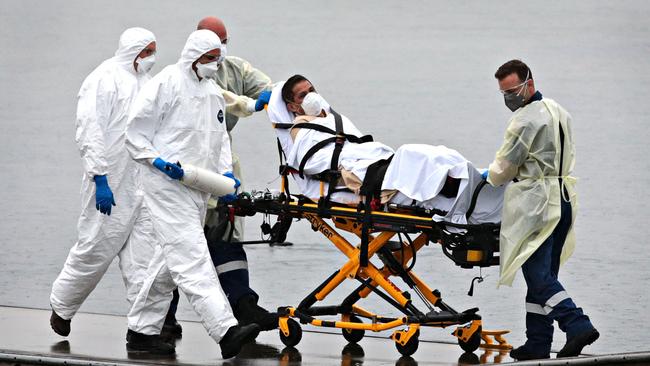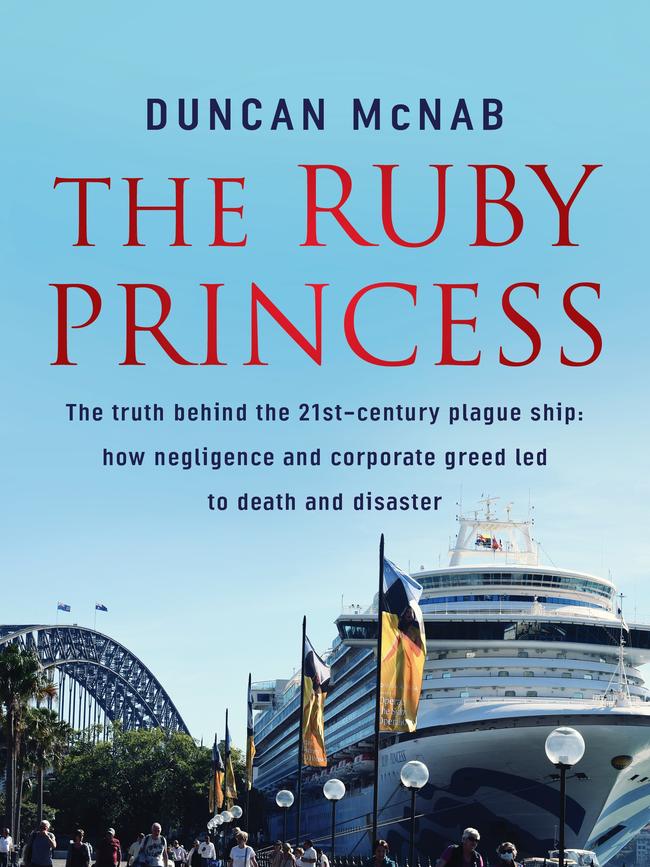The Ruby Princess and a ‘cascade of failures’ that unleashed disaster
A new account of the Ruby Princess debacle exposes the opaque nature of the cruise industry and the enormous cost to our national psyche.

The rather kitsch-sounding name of the Ruby Princess, the cruise liner that was the source of a catastrophic outbreak of coronavirus in Sydney in March last year, is destined to enter the annals of Australian maritime history with a notoriety matched only, perhaps, by the 19th-century plague ship Ticonderoga.
In 1852, overcrowded with mostly poor Highland Scottish immigrants, the Ticonderoga sailed towards Port Phillip Bay after leaving Liverpool in England. The ship was riddled with typhus, a terrible disease caused by lack of adequate sanitation that killed around 100 people on board, including many young children.
As a practical response, the arrival of the Ticonderoga prompted the establishment of a makeshift quarantine station at Point Nepean that subsequently remained in operation for more than a century.
Many of the deaths that took place on the Ticonderoga occurred during quarantine, though the disease did not spread beyond the people on the ship.
The outbreak of COVID-19 on the Ruby Princess led to fewer direct deaths than the Ticonderoga typhoid epidemic but the economic cost and damage to the national psyche was enormous and may never be fully known.
Duncan McNab, a former NSW police officer, is one of Australia’s most prolific true-crime authors. In his new book, The Ruby Princess, he explains in compelling detail why the challenge confronting key health officials last year was much more complicated than the problem that would have faced their colonial counterparts in the 19th century.
It was a “cascade of failures”, in McNab’s memorable phrase, that allowed the virus to escape from the Ruby Princess. The debacle demonstrates that the huge advances in border security and quarantine procedures in modern times have not prevented highly contagious and potentially deadly diseases being brought into Australia.
One complicating factor is the opaque nature of the highly profitable luxury cruise ship industry. Every year a fleet comprising hundreds of large ships operating under flags of convenience carries tens of millions of passengers across the globe.
The cruise companies apparently pay low wages to crew members and have been accused of not always adhering to the highest standards of corporate ethics.

Among the more controversial aspects of cruising touched on by McNab is the effect the voyages have on the environment in terms of pollution caused by vast amount of heavy fossil fuel needed to propel each ship and the allegedly indiscriminate dumping of large quantities of waste at sea.
McNab describes how the Ruby Princess medical situation was governed by a multi-layered decision-making process involving different agencies and authorities that could be brought undone by a single mistake or breakdown in communication by one of the many teams of people involved in managing the crisis.
Notwithstanding all of the protocols and public health expertise organised to prevent such disasters from occurring, the fact remains that 2700 passengers were allowed to leave the ship on March 19 before the results of their tests were known to authorities. Hundreds of passengers and crew were later found to have tested positive and nearly 30 of them died.
Within a month, writes McNab, around a quarter of the total number of people who had died in Australia from the virus had a traceable connection with the Ruby Princess. “This staggering toll would only be surpassed months later in yet another debacle, this time in the quarantine hotels in Melbourne that led to the long lockdown of Victoria.”
It is not as if the correct approach hadn’t been identified. “Discussions which had taken place a month earlier regarding taking the cautious approach and testing COVID-19 swabs before disembarkation were either forgotten or ignored,” McNab writes.
The last part of the narrative features an account of the special commission of inquiry that was set up in the wake of the Ruby Princess fiasco to find out exactly what went wrong. McNab seems to go along with the commission’s finding that the principal explanation was human error.
While there were other sources of coronavirus transmission in Australia and no shortage of mistakes made by politicians and bureaucrats elsewhere than in NSW, McNab says there will always be a prominent place in the story of the pandemic for this particular episode.
“The Ruby Princess, a ship on which so many passengers had enjoyed a respite from their daily lives or even, for some, the ubiquitous cruise of a lifetime, will forever be remembered as the vessel that brought the plague of COVID-19 to Australia.”
Simon Caterson is a writer and critic.
The Ruby Princess
Macmillan Australia, 304pp, $34.95

To join the conversation, please log in. Don't have an account? Register
Join the conversation, you are commenting as Logout